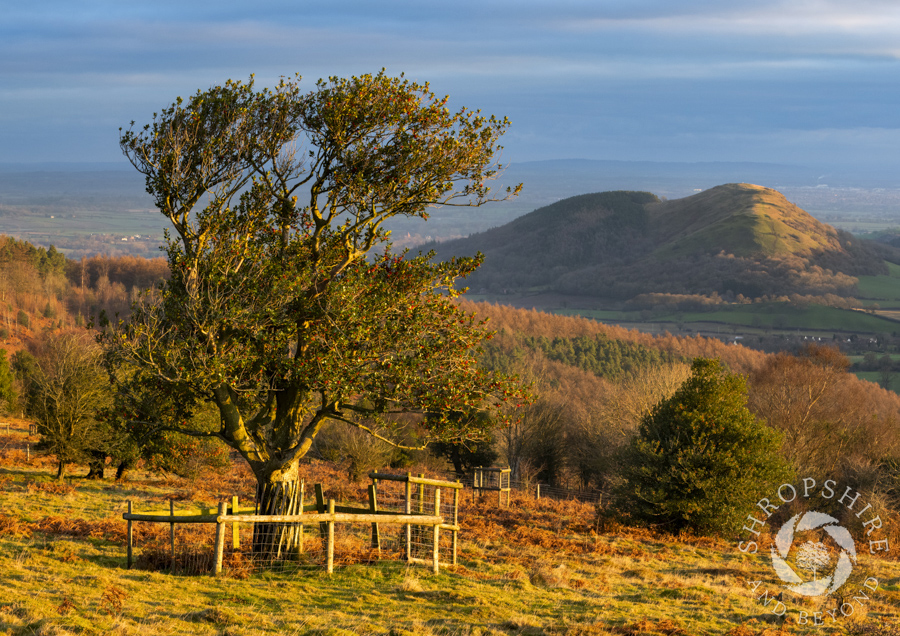Winter sun on the Hollies Nature Reserve
It looks like autumn, but this was my view yesterday on a cold but sunny winter morning on the Stiperstones.

I was standing on the Hollies Nature Reserve and looking out across the Shropshire landscape towards Earl’s and Pontesford Hill.
The Hollies is a cluster of around 500 gnarled and wizened trees that are about 400 years old, and luck has played a huge role in the survival of what is one of the oldest holly groves in Europe
Many holly woods - or hollins - have been grubbed up over the past decades and centuries, but the holly trees are still standing proud here on the Stiperstones.
This is mostly due to the miners who worked the rich seams of lead beneath the spectacular 10-kilometre ridge, which rises to 536 metres above sea level.
The men working in the Snailbeach lead mines brought their families with them to live on this exposed hillside, and supplemented their earnings by keeping a few sheep and cattle.
The holly trees provided vital winter fodder for the animals thanks to their nutritious, evergreen leaves, which are soft and prickle-free above the browsing line.
This made them so valuable that they escaped the holly’s usual fate of being chopped down for firewood, or employed in uses such as walking sticks, knobs for teapot lids and handles for horse whips.
At the same time, the regular practice of cutting back the branches to get at the leaves invigorated the trees and prolonged their lives.
Today, the Hollies is in the safe hands of Shropshire Wildlife Trust. The reserve stretches to nearly 37 hectares (90 acres) and is a unique place that casts a spell over all who come here.
The trees are extraordinary characters, their contorted shapes creaking with age yet continuing to defy the march of the years thanks to their astonishing powers of renewal.
Visitors will often come across a rowan tree growing side by side with a holly, or even rooted inside it.
This is down to wintering thrushes such as redwings and fieldfares which feast on rowan berries and then perch in the holly trees. The birds’ droppings contain rowan seeds which germinate in cracks in the bark.
These so-called ‘cuckoo’ trees have, in many instances, grown stronger than their hosts, splitting the holly in two as their roots grow down.
No one lives on the ridge anymore, although the livestock remain. The legacy of lead mining - which began in Roman times - is also still very much evidence, despite extraction ceasing in the early 1900s.
The Hollies is a timeless, almost mystical place that cannot fail to have a profound effect on all who visit. Echoes of the past abound, and the shouts and sounds of those previous generations who eked out a living in this wild spot feel but a heartbeat away.
Published by Shropshire and Beyond on (modified )
Latest Posts
Picture countdown to Christmas in Shropshire
A walk into autumn along Wenlock Edge
Rainbow lights up the sky above Ludlow
Stunning sight at sunset in Clun Valley
Glorious colours along the Llangollen Canal



